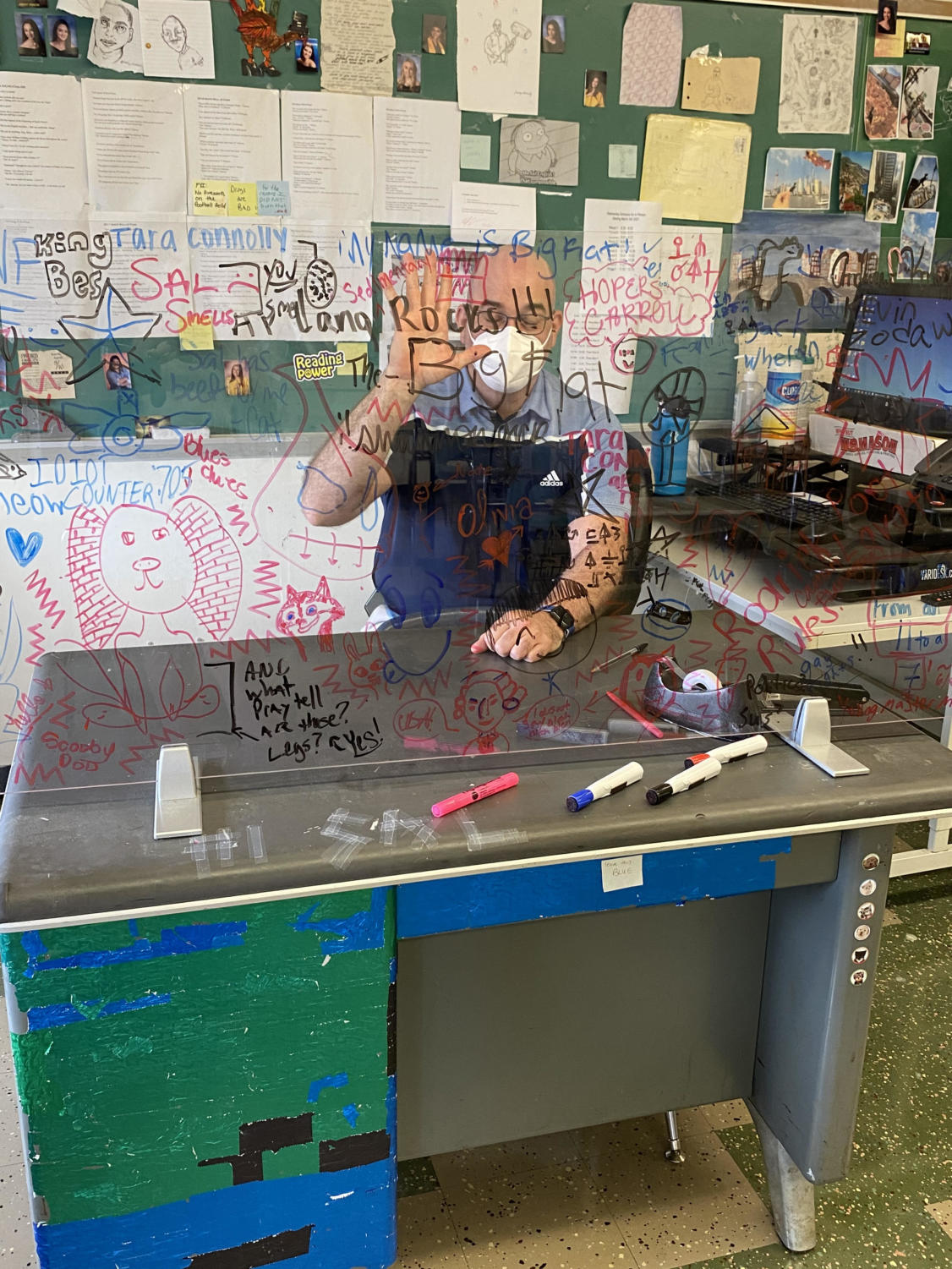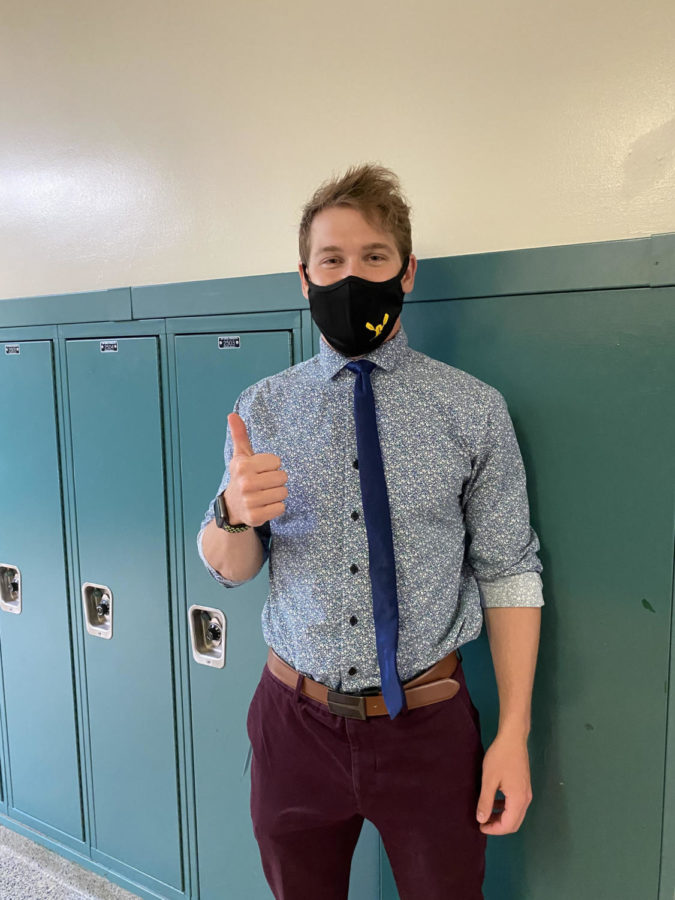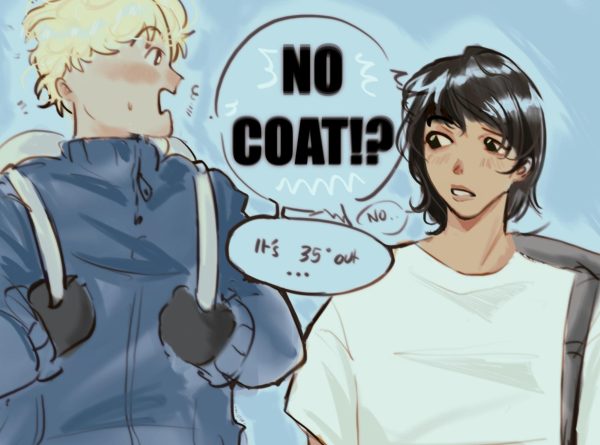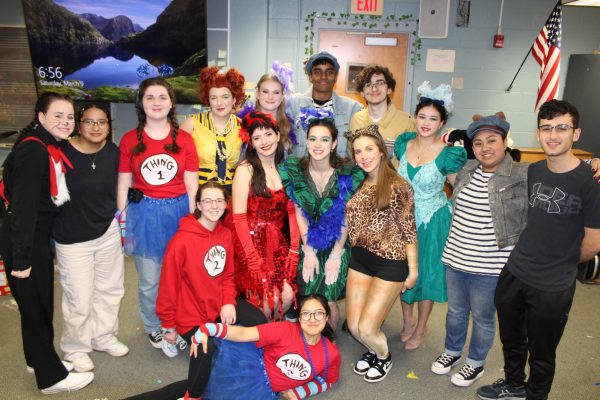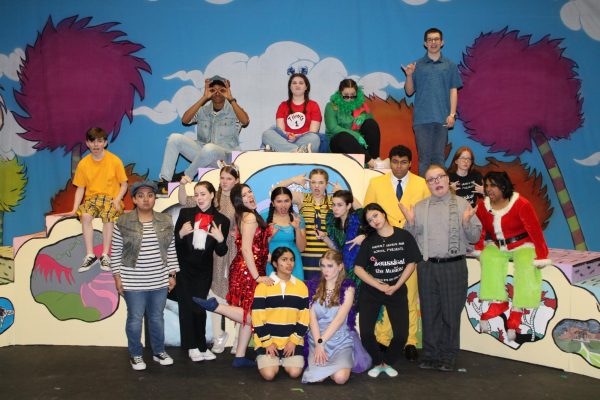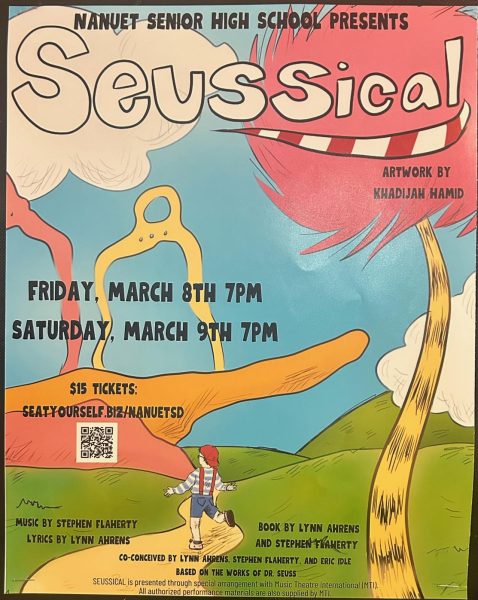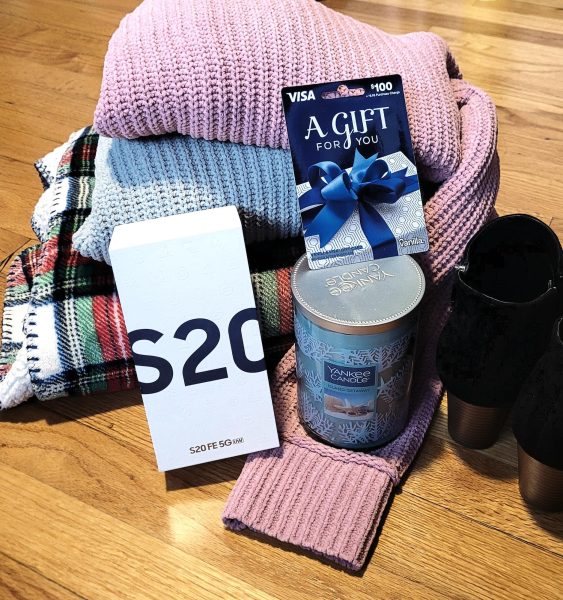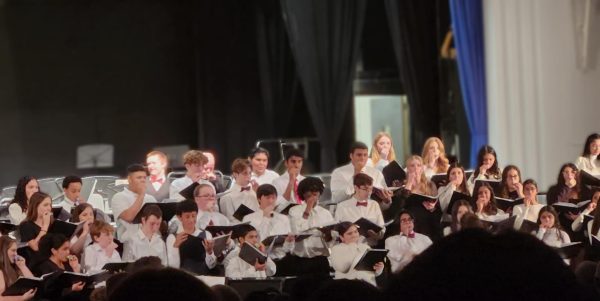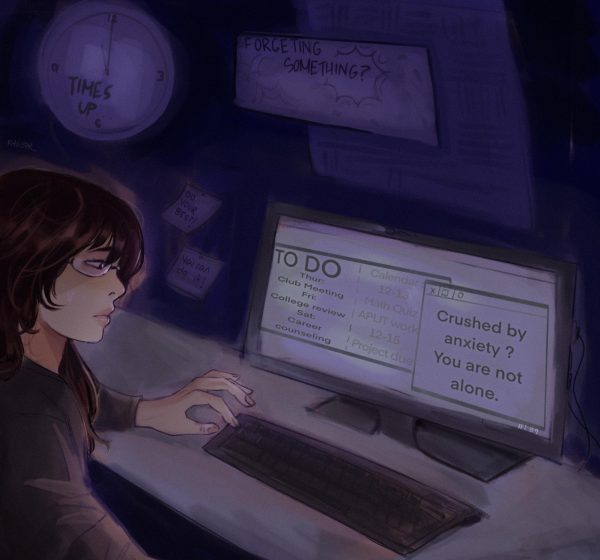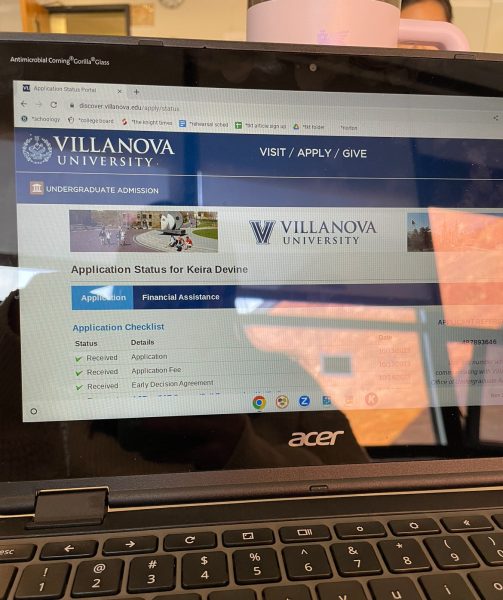Pandemic Teaching 101: Teachers Reflect on Challenges and Lessons Learned this School Year
The clock is ticking till summer! As the end of the school year is literally right around the corner, teachers have learned so much about themselves and their students.
The high school’s French teacher Mrs. Hurdis believes that this year was definitely a learning experience. According to Hurdis, she had to alter her teaching style to fit into virtual learning.
“I really had to rethink how I taught the language and how I could present grammar in a way that could be accessible to the kids at home,” she said. “I also had to create some new activities that could be done digitally since hands-on activities were not something I could do during COVID.”
Fortunately for her, she re-taught students from previous years, so she had an idea about who they were as individuals and how they learn best as students.
“For the students who loop with me, I feel as though I’d already developed a relationship the year before, so it was a matter of maintaining those relationships and being open and honest with the kids,” she said.
Because Hurdis also teaches 9th graders, she said she made it a priority to connect with them at the beginning of this school year. Although, she admits this was a little more challenging.
“The real challenge came with the freshman who had never met me and didn’t know anything about me,” she said, adding that she incorporated new activities to get all virtual students involved. “I always try to encourage students to work with and meet new people.”
Mrs. Ross, who teaches English 10 and English 10 Honors, said that throughout this tough school year, there have been many positive changes and experiences.
“I’ve learned so much this year about compassion and making a greater effort to meet my students where they are emotionally,” she said. “That doesn’t mean lowering standards; It’s about creating flexibility to help lift students up when they need it.”
Adjusting to a new way of teaching was something Ross had to conquer head on, and see how it all went. According to her, that meant being flexible and adapting to change.
“I realized early on that I had to shift gears and have a lot of whole-class reading and discussion lessons to get through some of the rigorous curriculum, which was not really my style,” she said. “But I quickly realized how much I loved being a part of their incredibly rich discussions.”
Mr. Breyfogle teaches 11th-Grade US History and 9th-Grade Global Studies. Breyfogle said that some aspects of this past year were “melancholic” and “sad” for him as a teacher.
“My favorite part of the day is student interaction,” he said. “In the beginning of the year when everyone was pretty much remote, seeing either blank screens because students didn’t have their cameras on, or just seeing the top of their heads or a ceiling light wasn’t the best in terms of teaching.”
Mr. Breyfogle said he found having some students hybrid and some students remote difficult in terms of giving assignments and making connections with them.
“I was using the chromebook for everything,” he said. “I’d usually give out paper documents, as well, so it was hard to adjust a lot of my assignments and activities to something that was going to be on paper to virtual.”
According to Mr. Breyfogle, he found himself glued to the chair a lot more, which he wasn’t happy about. If you haven’t had him as a teacher, Mr. Breyfogle is a very theatrical person who likes to move around a lot during his lessons. He altered his teaching styles by trying to get students to work together more.
“I tried to do a little more group work and collaboration,” he said. “I used the break-out rooms a ton on Zoom, so I still had that aspect. It was a little difficult because students preferred to have their microphones turned off and preferred to chat, so I would have to turn the chat off and force them to speak to each other. Any method of collaboration, I tried to do.”
While trying to be “as optimistic as possible” Mr. Breyfogle said that this year wasn’t the worst. Trying to elicit student response was a challenge he faced frequently. He also found it difficult when the internet would not work efficiently and microphones would lag, this prevented him from hearing student’s answers. Mr. Breyfogle said he hopes that his classrooms will be filled again!
“I’m hoping very limited, to no one, online,” he said.
A challenge every year for teachers is learning names. According to Mr. Breyfogle, this was even more of a challenge during this strange year.
“Sometimes I forget their name because usually Zoom has them on it, and now this is the first time where a name is not constantly there,” he said. “So I have to try even harder to remember. In a normal year, by October or November, I’m good with names. But we also had the hybrid in the beginning of the year, so I see someone Monday and Tuesday and the next time I see them is the following Monday, so I really struggled with learning and remembering names.”
Mr. Salerno teaches AP Language and Composition and 12th-Grade English. He’s known to be a friendly, outgoing, and theatrical person, as well. According to Mr. Salerno, he did not find too much difficulty in teaching an AP course during these unprecedented times.
“Day-to-day activities were exactly the same,” he said. “The course material and textbook is 100% available online, so the kids fully had access to these resources. From that capacity, it was really straightforward.”
According to Mr. Salerno, the hardest part was the writing.
“Students had difficulty with the time constraints since they were writing at home, and it was getting difficult to have one-on-one conferences with the students about their writing, although that was settled with the break-out room feature,” he said.
Throughout all of the second and third quarter, Mr. Salerno was virtual. He said he believes day-to-day student interaction and teaching in person cannot be replicated in a virtual environment, but he got a better sense of what us kids were going through.
“It was weird, I felt more like I understood students a little bit better because of that,” he said. “You miss the one-on-one interactions with your colleagues and students, and it’s really tough to gauge interest and understanding through Zoom.”
Connecting with students was difficult here and there, Mr. Salerno explained. He refers to himself as a rather “upbeat” person, who enjoys being everyone’s “cheerleader.”
“But I understand that it’s really hard to try and motivate a teenager when it is several months in and there’s a great deal of uncertainty and anxiety, and they have had their social lives ripped out from beneath them,” he said. “So I understand that.”
Mr. Salerno made frequent use of Zoom’s break-out room feature, both pulling students out into groups and/or individually, and setting a task for the rest of the class. He said he saw some benefits to this virtual environment, as well.
“I would jump into the breakout rooms, then jump back out, check on the regular students – It was a little bit harder to navigate, but that breakout room allows more privacy than an actual classroom would,” he said. “There’s not a ton of differentiation in an AP class, because the curriculum is what it is, but in a 12th-grade English class, there’s room for negotiation.”
Mr. Salerno hopes more students will be in-person from the beginning, and he sees many ways on how it’s better for them.
“Just seeing the difference it makes for students who have gone from all virtual to in-person, I’ve never seen that work against students,” he said, adding, “I’ve almost always seen it improve their mental well-being and academic performance.”
These are just a handful of amazing teachers here at Nanuet Senior High School, who made it through the craziest and toughest years, and adapted their usual style of teaching to better influence students.
Many teachers, although it was difficult, gave a lot of dedication and put in a lot of hard work to make their usual impact on a student’s education.
I think it’s safe to say that we all hope to be fully in-person next year so that we can move through and out of this pandemic together and become stronger mentally, socially and academically.
